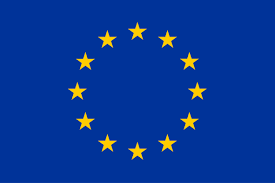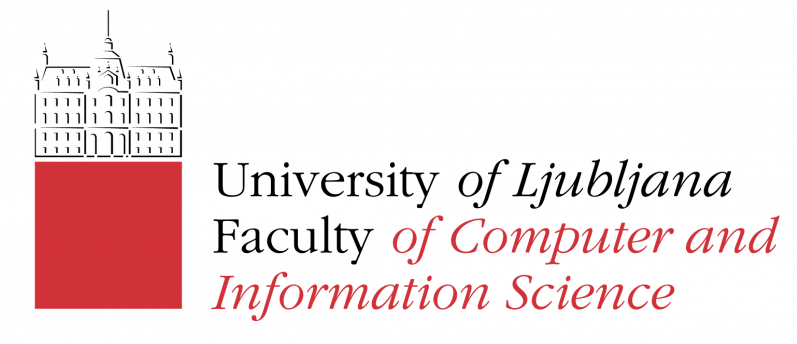As the NFT market booms, NFTWATCH team calls the attention to issues such as poorly developed smart contracts, scams, price manipulation, intellectual property abuses occur. In this interview, team member Alain Broustail explains us how their open-source project aims to address this challenge, by helping the collect and aggregation of all NFT related information.

How did you hear about ONTOCHAIN and what drove you to apply?
There is a French company based in Lyon called iEXEC which we appreciate a lot for their innovative way to look at decentralised data management, one of Coexya’s key domain of expertise. We heard from them about the ONTOCHAIN community that we discovered by browsing the internet. Since that time, we have been following the ONTOCHAIN news, waiting for the expected Open Call 2.
Tell us a bit about the story behind your team. What drives you and what brought you together?
Coexya is a company with 680 collaborators dedicated to providing consulting services, IT services and software solutions. We are organised in pole of competences, each of them addressing highly specialised topics. The NFTWATCH project is born initially from the ideas of two senior managers, Jean-Louis and myself.
I joined Coexya back in 2011, as the director of the Paris consulting activity. We were at the time knew as Sword Group in France. I bought my first cryptoassets in 2017, read the bitcoin whitepaper a few weeks after, got amazed by the elegance of it, and had the chance to run my first blockchain projects in 2018. The blockchain consulting market was still very small, and actually not very bright at this time, but my convictions were strong. With the full support of the group, I proposed to launch a dedicated blockchain practice, which we did in 2019.
Our technical director was – and still is – Jean-Louis Vila. In addition of being a friend, Jean-Louis holds a PhD of digital image processing, has 25 years of experience in designing state of the art IT solution and is a member of the Coexya board. Jean-Louis is also crypto-friendly and thus is following, and even sometime directly involved in, all our blockchain projects.
Together we wanted to launch NFTWATCH, and ONTOCHAIN gave us the opportunity to start it in perfect conditions. As soon as we confirmed the project, we built a project team of 6 people in total, with a mixed of experts in data manipulation, graph-based data modeling and blockchain technology. We do not lack skilled people at Coexya, and for this project we had a long list of motivated people asking to join the team, proving us that NFTs and crytpoassets really interest the people!
Can you briefly explain your project and its contribution to the ONTOCHAIN software ecosystem?
The NFT market is booming but is still lacking both specialised data vendors and data models to analyse it. As a matter of fact, it is very difficult for all players (artists or corporations who wants to issue NFT, collectors, investors, etc…) to get a good idea of what’s happening. Buying an NFT today seems like driving in the fog. That brings a lot of issues, going from poorly developed smart contracts, scams, price manipulation, intellectual property abuses. According to a recent article, the giant of the sector Opensea itself recognizes that up to 80% of the listed NFT were fraudulent!
The data providers already present on the market today are focusing on the market prices, they are almost exclusively interested in the commercial side of NFTs. Nobody is looking at the art itself for example. Let me give you some examples of questions that nobody can answer today and that we aim to look at:
- Are NFTs showing dogs selling better than NFTs showing horses?
- On what blockchain are sport NFT most popular?
- Are the 2020 NFT collections still liquid?
- What is the percentage of NFT launch failures in 2020? 2021? Is there a better day in the week for launching an NFT?
And for a specific NFT:
- Is this NFT, and the associated collection, legit or is it a scam?
- Is this NFT really decentralised? Where is stored the digital art?
- Is the digital art really from the artist mentioned?
- What is the fair price, taking out all possible price manipulation?
Or for a specific wallet:
- Is my NFT portfolio “trendy”?
- Is this NFT owner a scammer?
- What type of wallet buys NFTs with monkeys on them?
NFTWATCH is the first open-source project aiming to help the collect and aggregation of all NFT related information using semantic technologies. We won’t be able to answer all above questions at start, but one by one, we will look at them!
And ONTOCHAIN is a very good place to be for this project. First of all, it is one of the very few communities interested in decentralised data storage, and able to manipulate graph-based data as we are dealing with. Secondly, we share the same love and interest for the open-source approach, interoperability in a community driven ecosystem. The number of synergies with other projects is very important, especially with the arrival of the second waves of members.
How did you come up with this idea? What’s unique about it? And what will be the end user benefits?
As the manager of the blockchain practice, I have been following the development of the NFT market for quite a long time (my first presentation on the topic was in January 2019, which sounds like prehistorical now!). Since then, I have been astonished by both the great ideas and the popular success of NFTs, but also by the complete darkness in which NFT issuers and NFT investors are when it is time to look critically at the quality of their digital assets. It is impressive how quickly the market grew with so little quality data to back it up. Typically, up to now, nobody seems interested in analysing the content of the NFT themselves: what is in the image associated with the NFT.
I remember around a year ago discussing that topic with our most experienced expert in the area of image recognition, Jean-Louis Vila. It did not take us a lot of time to agree on the interest of NFTWATCH and start working on a possible solution.
You are contributing to ONTOCHAIN’s mission of delivering a new software ecosystem for trusted, traceable & transparent ontological knowledge. How is ONTOCHAIN contributing to your own ambitions?
I won’t lie, the first help we receive is the financial contribution. It does not cover our total R&D investment, far from it, but it helped us kick the project off without having to spend more time internally in building a ROI based business cases.
Furthermore, ONTOCHAIN is a good boost for communicating around the project. We would actually be very proud to see the open-source code be actively reused, which can’t happen if you do not have a community.
Finally, the other ONTOCHAIN members all have interesting projects, and we have already identified some nice business and technical synergies with a few of them.
How do you assess the experience of working with other teams in the co-creation of the ONTOCHAIN ecosystem? What type of synergies do you want to explore?
Our project team believes in the future of web3, and in particular in the interest of decentralised data and document management. With ONTOCHAIN, we are specifically looking at opportunities to test and used such technologies and to see how we can make massive amount of data available onchain through RDF graph compatible oracles.
What are your expectations regarding the new software ecosystem that ONTOCHAIN will deliver and its contribution to the NGI priority areas?
Business wise, we hope for an ecosystem that is production oriented, not just whitepapers and theoretical R&D that companies like ours can’t reuse.
On a more personal note, I really believe our world needs a more decentralised and censor proof internet associated to an efficient decentralised self-sovereign identity management, and I can hope ONTOCHAIN will strongly contribute to it. If my taxes through the NGI initiative can somehow help the European Union to build a transparent and fair internet for everyone, I would be prouder to pay them!

 This project has received funding from the European Union’s Horizon 2020 research and innovation programme under grant agreement No 957338
This project has received funding from the European Union’s Horizon 2020 research and innovation programme under grant agreement No 957338




